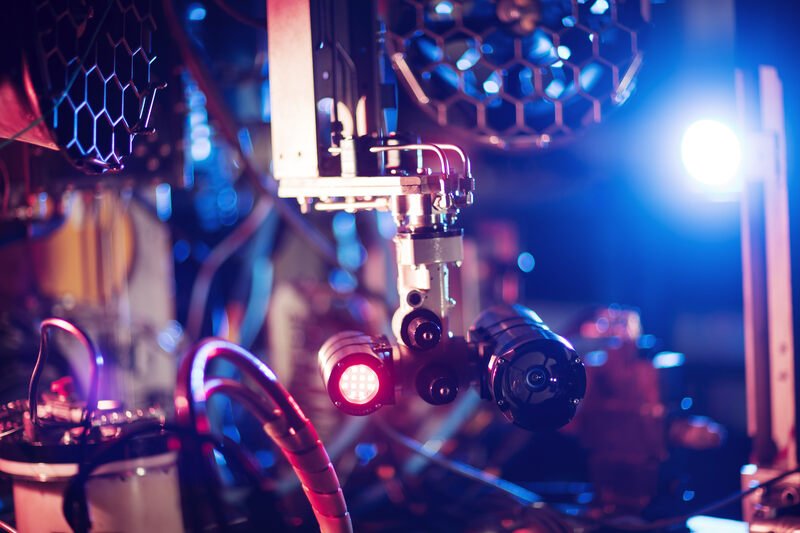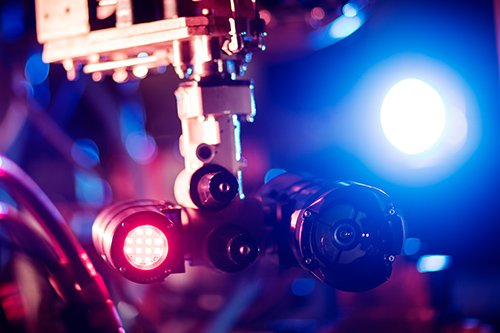Why Use Red and Blue Subsea Lights in Marine Science and Offshore Energy?
As marine scientists and offshore energy professionals continue to explore the depths of our oceans and harness the energy from offshore sources, the importance of innovative lighting solutions has become increasingly important. White LEDs have traditionally been the go-to choice for illuminating subsea environments. However, the emergence of coloured subsea LEDs, particularly red and blue, has opened up a new spectrum of possibilities. In this article, we'll dive into the unique advantages of red and blue LEDs and explore their applications in marine science and offshore energy.
Why Are Subsea Lights Needed?
Underwater, light behaves differently, with colours fading away due to rapid absorption. When humans venture into the depths using submarines or scuba gear, their eyes and brain adapt to the diminished colours at depth. However, when capturing photos or video underwater, subsea cameras do not have the ability to adjust for the missing colours caused by sunlight absorption. To address this issue, a strategic combination of both white and coloured LEDs can be employed to compensate for these deficiencies, ensuring more accurate and vibrant visuals. Learn about picking the best subsea lights.
Why Use Red Subsea Lights?
Red subsea LEDs have proven to be invaluable tools in various marine science and offshore energy applications. Red light has a longer wavelength, which allows it to penetrate water more effectively than other colours. This makes it an ideal choice for enhancing visibility and imaging in deep or turbid waters. For marine scientists, red LEDs enable clearer observations during research missions, particularly in habitats where white light might scatter and distort images.
Preserving Natural Night Vision
Red LEDs play a critical role in nighttime research and diving operations. The longer wavelength of red light is less likely to disturb marine life and allows divers to maintain their natural night vision. This is essential for conducting nocturnal research, surveys, and monitoring tasks without disrupting the underwater ecosystem.
Attracting and Studying Marine Life
Beyond their illumination capabilities, red LEDs have unique applications in attracting and studying specific marine organisms. Researchers can use red light strategically to draw in certain species for observation or data collection, providing a non-intrusive way to study marine life while minimizing disruptions.
Non-intrusive Behavioral Studies
In marine science, behavioral studies often require observing marine creatures without interfering with their natural activities. Red subsea LEDs are advantageous in such studies, as many marine species are unable to perceive red light. Researchers can observe and record natural behaviors without eliciting reactions from the organisms.
Underwater Photography and Filming
Red subsea LEDs are employed in underwater photography and videography to illuminate subjects without causing visual disturbance to marine organisms. By using red light, photographers can capture stunning images of marine life in their natural habitat without startling or affecting their behavior.
Subsea Communication
Red subsea LEDs can be used for non-verbal communication between divers and underwater vehicles. In environments where noise might disturb marine life or when maintaining stealth is critical, red light signals can effectively convey messages among team members during diving operations or underwater tasks.
Underwater Instrumentation
In offshore energy operations, red subsea LEDs are employed in various instruments and sensors for underwater inspections. These LEDs facilitate effective data collection and visual assessments of subsea infrastructure, minimizing disturbance to the surrounding marine ecosystem.
Underwater Navigation
Red subsea LEDs are used for navigation purposes by underwater robots and remotely operated vehicles (ROVs). These LEDs can create clear directional cues and waypoints in challenging underwater environments, improving the accuracy and safety of subsea operations.
Hazard Lighting
In offshore energy applications, red subsea LEDs are employed to mark and highlight potential hazards, such as submerged equipment or structures, to ensure the safety of marine vessels and personnel.
Why Use Blue Subsea Lights?
Blue subsea LEDs offer their own set of advantages that make them a valuable asset in marine science and offshore energy operations. Blue light penetrates water exceptionally well, making it ideal for certain applications that require deeper illumination and leak detection.
Enhancing Underwater Imaging and Research
Blue LEDs are highly effective in underwater imaging and research tasks. Their ability to penetrate deeper into the water allows marine scientists to explore greater depths and capture clear visuals, making them crucial for deep-sea exploration and research missions.
Efficient Subsea Robotics and Navigation
Subsea robotics and autonomous vehicles have become pivotal in marine science and offshore energy industries. Equipping these robotic systems with blue LEDs enables precise communication, signaling, and navigation in the underwater environment. This enhances the efficiency and safety of subsea missions and operations.
Fluorescence
Many substances used in offshore industries, such as oil and chemical compounds, have natural fluorescence properties when exposed to specific wavelengths of light. Blue light, in particular, is effective at stimulating this fluorescence. When a leak occurs, substances with fluorescent properties will absorb the blue light and re-emit it at a different wavelength. By using specialized sensors and cameras, these emissions can be detected and captured, making leaks more visible and identifiable.
Enhanced Contrast
Blue light has a shorter wavelength compared to other colours, making it less likely to scatter or disperse in water. This property enhances the contrast between the leaking substance and the surrounding water, improving the clarity of the leak image. Consequently, leaks can be detected more accurately and from greater distances, facilitating prompt responses to potential hazards.
Nighttime Leak Detection
Blue subsea LEDs are particularly valuable for nighttime leak detection operations. At night, the contrast between leaking substances and seawater is even more apparent when illuminated by blue light. This ensures continuous monitoring and early detection, enhancing safety and environmental protection in offshore operations.
Minimizing Environmental Impact
The use of blue subsea LEDs for leak detection aligns with environmental preservation efforts. The controlled and targeted illumination of leaks minimizes unnecessary light pollution and potential harm to marine ecosystems, ensuring a more responsible approach to subsea operations.
Conclusion
In conclusion, red and blue subsea lights bring significant advantages to marine science and offshore energy operations. Enhanced visibility and the ability to attract and study marine life, conduct non-intrusive behavioral studies, facilitate underwater photography, enable subsea communication, serve in instrumentation and navigation, as well as mark hazards, are among the capabilities provided by red LEDs. On the other hand, blue LEDs excel in deep-sea exploration, subsea robotics, and efficient leak detection due to their capacity to stimulate fluorescence in certain substances. By strategically utilizing both white and coloured LEDs, researchers and professionals can compensate for the challenges of underwater visibility, unlocking new possibilities and promoting responsible practices in the subsea environment.




















